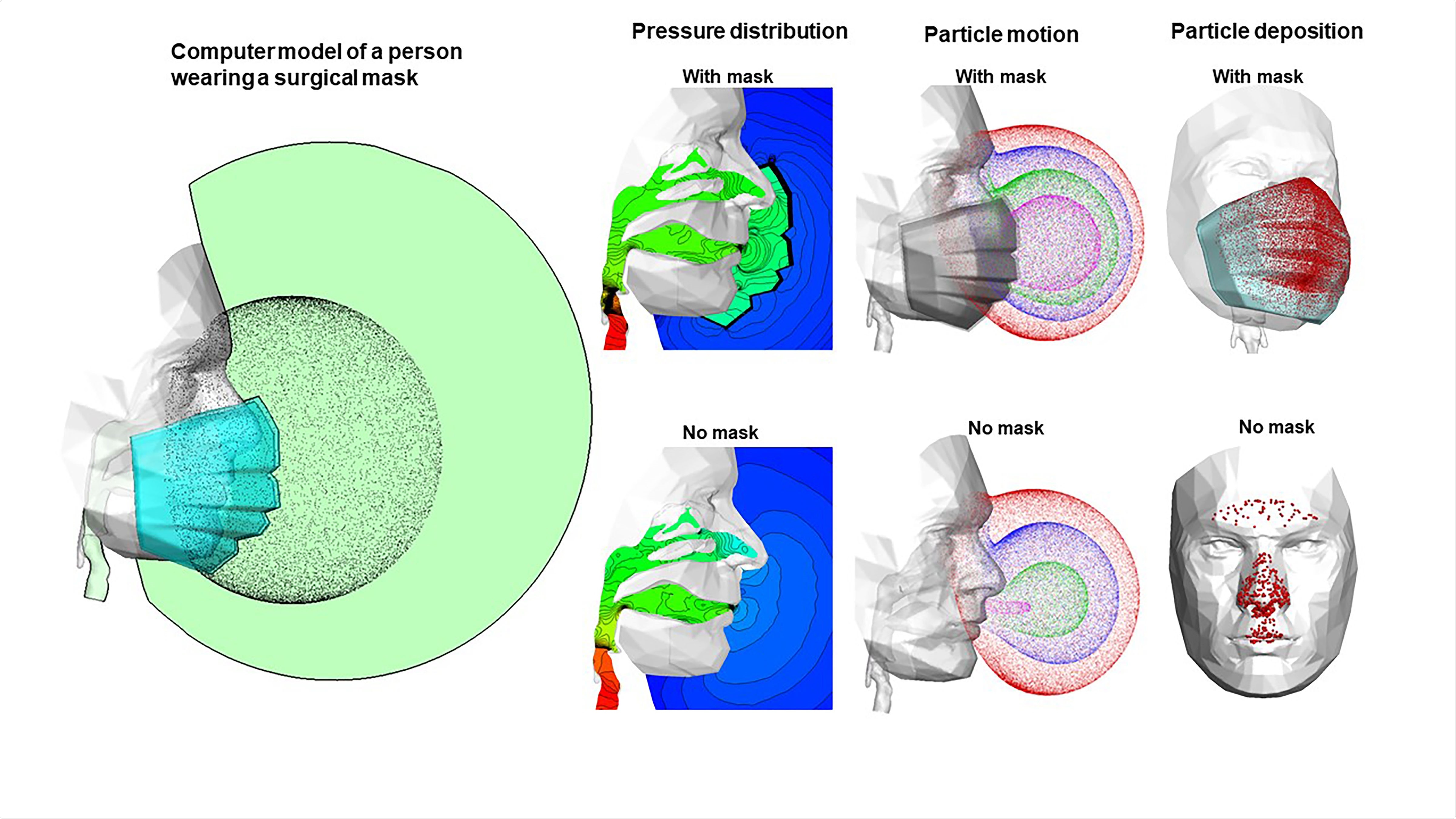Scientists have used a computational model to further our knowledge of how face masks impact airflow. In a new study, published this month in the journal Physics of Fluids, from the American Institute of Physics, a team of scientists from the University of Massachusetts Lowell and California Baptist University explains how not all masks protect the same from COVID-19 transmission. They conclude that old masks may be worse than not wearing a mask at all. These findings will likely influence the guidance on mask-wearing and potentially mask design.

Pressure and particle motions with and without a mask. Image Credit: Jinxiang Xi
Mask filtration efficiency essential for protection from COVID-19
While there is a wealth of evidence that demonstrates the efficacy of wearing a face mask at reducing the community transmission of COVID-19. However, until now, the effectiveness of masks at preventing the virus from being introduced into the respiratory tract of the wearer had received less attention.
It is often assumed that wearing a mask is always favorable to not wearing a mask at all. However, the results of the new study reveal that this is not always true. For particles smaller than 2.5 micrometers wearing a mask is not always beneficial, and can even enhance the viral load on the respiratory tract. Specifically, wearing masks that have less than 30% filtration efficiency, such as old masks, is worse than not wearing a mask at all.
Some masks worse than no mask
The team created a computational face mask model to predict how masks impact the inhalation and deposition of airborne particles in the upper respiratory tract. The model was based on a model of a person that was created to be physiologically realistic. The team added a surgical mask with pleats to the model and tracked the particles moving through the mask with numerical methods.
Using this method, the team was able to visualize how particles pass through the mask and deposit themselves onto to face, and enter the airways. The model even allowed them to model how the particles become deposited in the nose, pharynx, and deep lung.
The results of the modeling demonstrated that the mask altered airflow around the face, forcing it to enter the nose and mouth through the entire mask rather than through specific paths. The air movement into the airways was much slower through the mask than it usually is. This reduction in airflow speed, the researchers found, enhanced the inhalation of aerosols into the nose. They concluded that, even though masks filter out a large number of particles, those that escape the mask’s filtration are allowed to enter the respiratory tract.
Importantly, the study’s results highlighted that the mask’s filtration efficacy is vital to protecting the wearer from inhaling potentially COVID-19 laden particles. The results show that a three-layer surgical mask can achieve filtration efficacy as high as 65% (if new) and as low as 25% (if old). The results also concluded that wearing a mask with a 25% filtration efficacy may be worse than going without.
The team hopes that their findings will influence the current rules and regulations put in place to mitigate the transmission of COVID-19. The team’s findings emphasize the importance of not only wearing a mask but wearing an effective one with a high filtration efficacy
We hope public health authorities strengthen the current preventative measures to curb COVID-19 transmission, like choosing a more effective mask, wearing it properly for the highest protection, and avoid using an excessively used or expired surgical mask”.
Jinxiang Xi
Further studies are planned to further deepen our knowledge of how masks impact airflow patterns. The next studies will likely investigate how a mask shape impacts its protective efficacy.
Journal reference:
- Xi, J., Si, X.A. and Nagarajan, R. (2020). Effects of mask-wearing on the inhalability and deposition of airborne SARS-CoV-2 aerosols in human upper airway. Physics of Fluids, 32(12), p.123312.